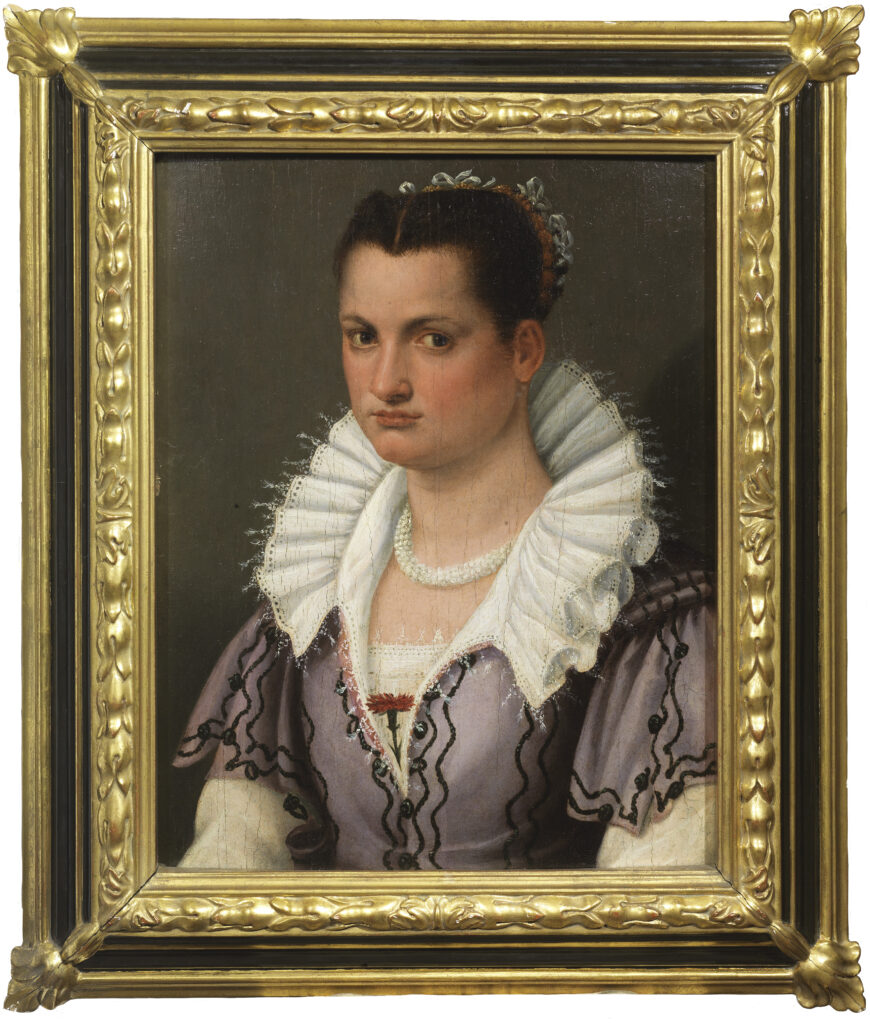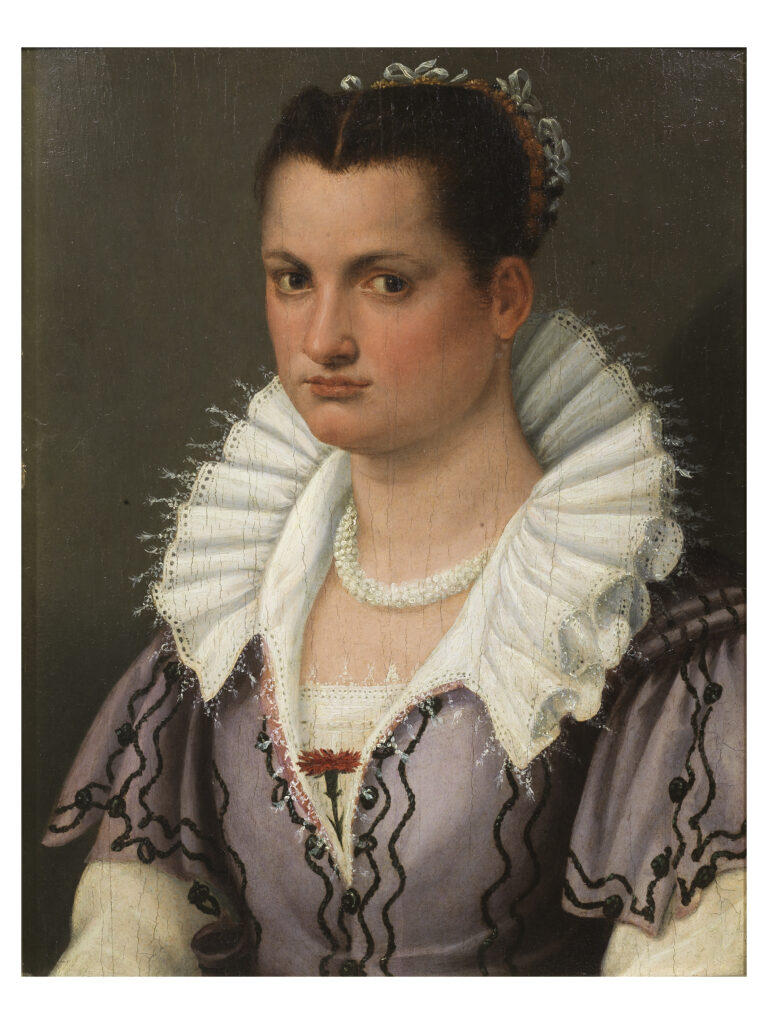ALESSANDRO ALLORI
Florence, 1535 – 1607
Portrait of a florentine noblewoman
oil on panel, cm 59×45,5
This exquisite panel painting, whose style can be traced back to the 16th century, is a half-length portrait of a young woman, seen slightly from the side.
The meticulous study conducted by historian Emilio Negro reveals “the clearly celebratory intent of the portrait,” which was probably painted to celebrate the marriage of two young people of noble origins, as shown by the elegant attire and the red carnation pinned to the dress of the young bride-to-be.
The panel, which is in a good state of preservation, belongs to the portrait genre widely in use between the 14th and 17th century, intended to adorn the rooms of palaces belonging to the nobility and wealthy merchants, depicting people “within the small circle of relatives.”
The figurative language fully expresses the Mannerism of Central Italy, more specifically suggesting, as corroborated by Negro, the style of the Florentine painter Alessandro Allori (Florence, 1535–1607) as the author of our panel. An undisputed pupil of Agnolo di Cosimo called Bronzino, Allori became an “autonomous artist and renowned workshop assistant” at an early age.
His experiences at the Grand Ducal court, his move to Rome and his return to his native city allowed Allori to embark on a brilliant career, enriched with important public and private commissions, leading to his appointment as Consul of the Accademia del Disegno in Florence (1563).
Negro therefore attributes our portrait to Alessandro Allori, who reveals himself here with the enamelled painting and the “vivid morphological features of the woman, pervaded by a singular Florentine mannerism,” recalling other works by the artist, especially the Portrait of Joanna of Austria (Florence, Palazzo Pitti) and the Portrait of Maria de’ Medici (Vienna, Kunsthistorisches Museum).


